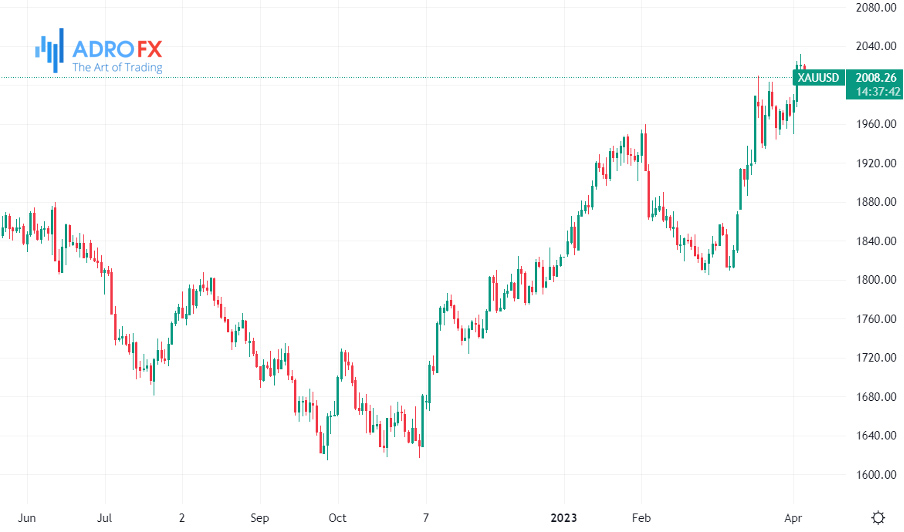US Stocks Slightly Up on Thursday Ahead of Pivotal Payrolls Report | Daily Market Analysis

Key events:
- USA – Nonfarm Payrolls (Mar)
- USA – Unemployment Rate (Mar)
Investors are processing indications of a weakening labor market amid a stable rates environment, with US stocks slightly up on Thursday and set for no change this week. The approaching 1Q23 earnings season adds to the anticipation. The past week was dense with market-moving information, including a surprising RBNZ hike and an unexpected OPEC production cut. The most crucial data point, payrolls, is yet to come and will be released today morning, a rare day when the government is open but the stock market is closed.
Investors are primarily focused on the present, but the pandemic's implications may not have fully played out. Commercial Real Estate is now a concern as fewer people are working in offices, and inflation remains a challenge, especially with the recent uptick in oil prices. The market reaction this week suggests that investors are searching for indications that the US economy can handle higher rates and regional bank uncertainty for a successful soft landing, despite the downside data surprise.
Although the current market narrative points to softer growth in the US, relying too heavily on diffusion indices and soft data can be misleading. Despite the decline in job openings, rumors of an above-consensus for NFP later today are circulating, confirming a tight labor market. Investors should exercise caution in extending the narrative too far.

Banks are borrowing less from Fed facilities, and over time, market concerns about credit availability may ease without a decline in bank lending data. Despite seasonal factors artificially lowering the seasonally adjusted initial claims by 40-50k, last night's jobless claims were not alarming. As the holiday-shortened week comes to a close, equity investors may have realized the potential for overanalyzing diffusion indexes and labor market data.

On Thursday, the S&P 500 rose 0.4%, while the Dow Jones Industrial Average remained unchanged, and the Nasdaq Composite gained 0.8%. Natural-gas futures reached a new low on Thursday, falling 6.7% to $2.011 per million British thermal units after weekly inventory data showed a small withdrawal from storage.
As concerns around banks borrowing from the Fed window decrease, the demand for "safe-haven" gold is also decreasing, causing gold prices to align better with real rates markets. However, in the presence of rising recession risks, gold's downside in the case of a soft landing or less dovish Fed is less than gold's upside in the event of a growth shock leading to a recession.

Moving forward, it may be challenging for gold to sustainably move above $2025-50/oz without the Fed cutting rates in a recession scenario that sees it pivot towards growth support. This week, gold struggled following less dovish Fed speak, with a more inflation-focused Fed suggesting that the risk is that US real rates will rise, signaling to gold buyers that the market may have prematurely priced for a Fed pivot.
Despite softer PCE inflation data in February, the underlying details were firmer, with broad-based and persistent inflation pressures being crucial reasons for the Fed's maintained tightening bias at the March FOMC meeting. How banking sector turmoil affects credit conditions will be crucial to future monetary policy actions and gold prices going forward.
All in all, today`s US payrolls report will be a crucial factor for stocks, and a worst-case scenario would involve rising wages and a weaker jobs number. Such an outcome could potentially reverse the growing expectation of a Fed pause in May and put stocks at risk of losing their recent gains.









